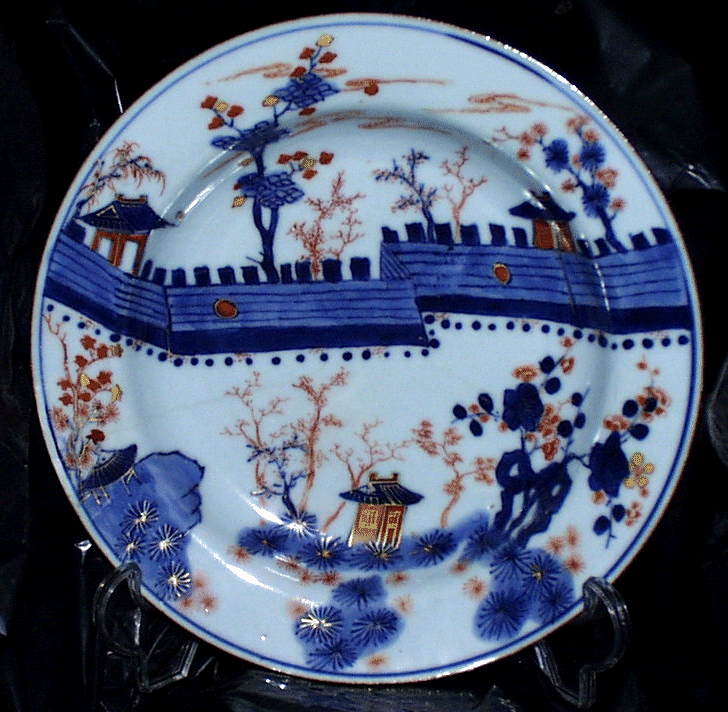 17th Century
17th Century
English, Japanese and Chinese Imari
When the Ming dynasty fell in the late 17th Century, the Dutch East India Company needed to find alternative sources for importing Porcelain in bulk to meet the increasing demand in the West. Japanese porcelain, shipped from the port of Imari, was cheap bright and colourful – in contrast to the plain blue and white from China – Imari’s most noticeable export was blue and white underglaze, embellished with gold and iron red decoration. The port name, Imari, is now synonymous with this type of decoration (some Arita ware looks similar but does not include the underglaze blue). Below, this good example of 18th Century Japanese Imari is typically distinguished by the dullness of the gold embellishment, the deep dark Indigo Blue that borders on black (frequently applied with a thick brush) and the dull orangey-red thickly (and, again, often crudely applied) surface glazed colouring under the gold.
![<a title="By No machine-readable author provided. N@ldo assumed (based on copyright claims). [CC BY-SA 2.5 (http://creativecommons.org/licenses/by-sa/2.5)], via Wikimedia Commons" href="https://commons.wikimedia.org/wiki/File%3AImariA.JPG"><img width="256" alt="ImariA" src="https://upload.wikimedia.org/wikipedia/commons/b/b0/ImariA.JPG"/></a>](https://marksonchina.com/marks/wp-content/uploads/2017/03/ImariA.jpg)
Most early Chinese Imari style patterns tended to anonymous flowers, pots and random “anonymous” patterns – typically ‘Chinese Imari’ is distinctive for its delicacy – the porcelain is thin and fine – almost brittle.
This small chinese teabowl and saucer dates from around 1740.
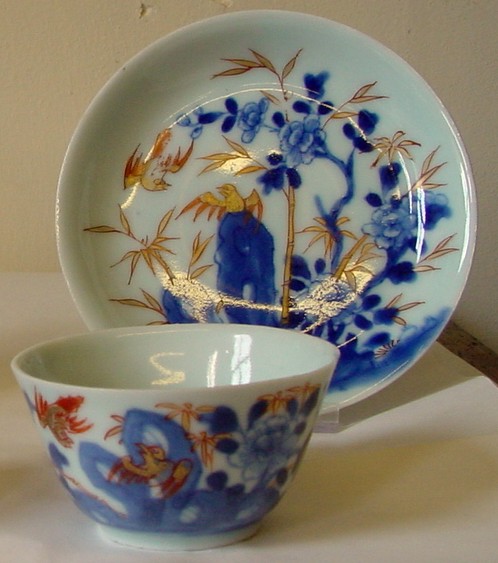
Like the Japanese designs, the bulk of patterns tend to focus on flowers, leaves and abstract patterns. The bright colours aged well and a hundred years later, the burgeoning English Porcelain manufacturers used the bright bold flower and abstract patterns, that typify Imari ware, in their own products. English Imari ware has been produced continuously, since it was first introduced – some patterns have also stayed, broadly the same for nearly 200 years.
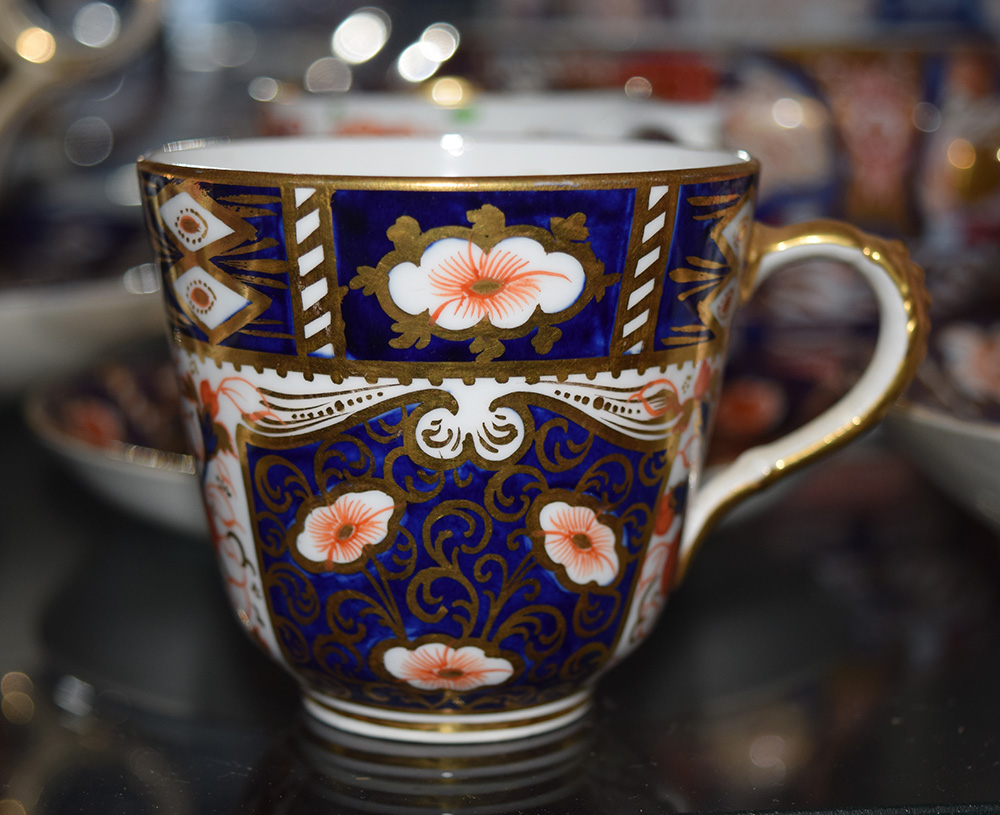
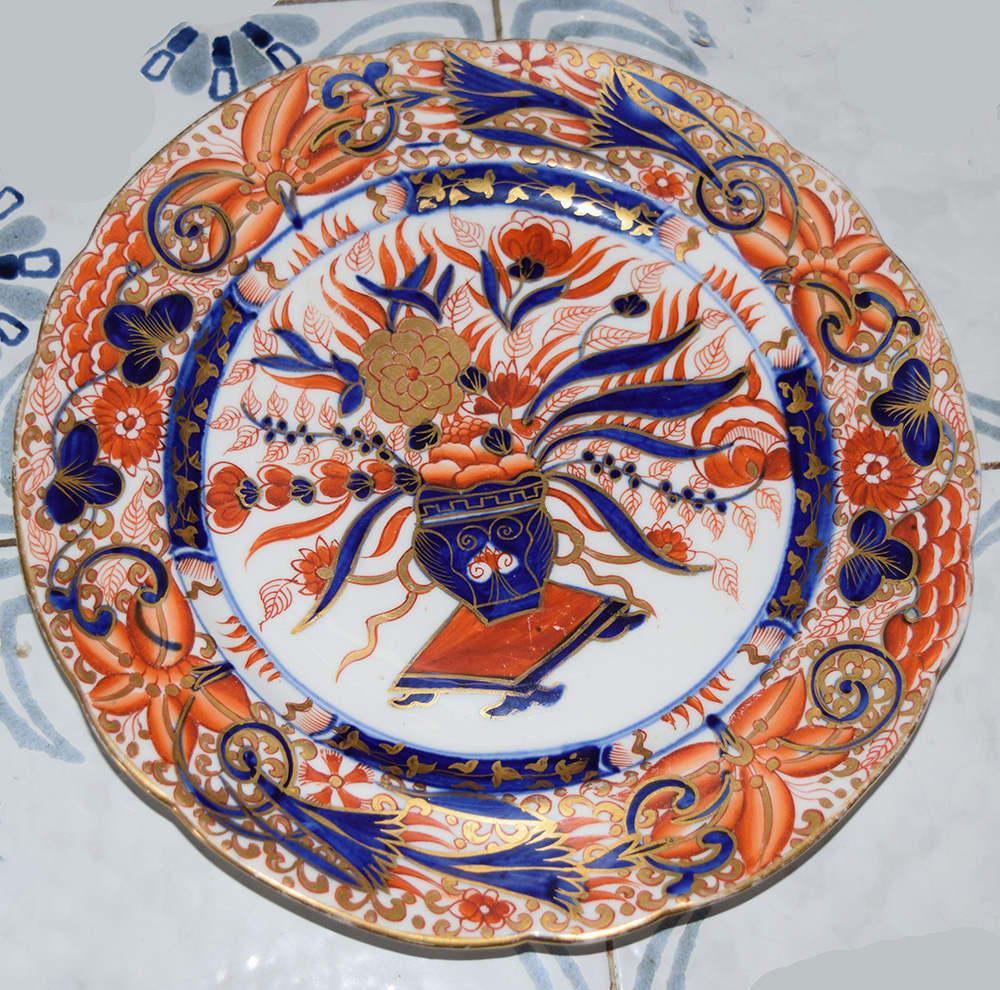
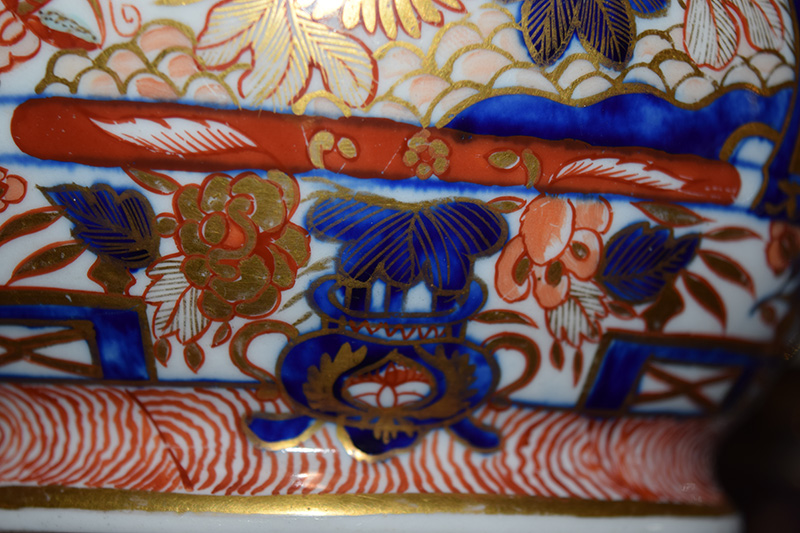
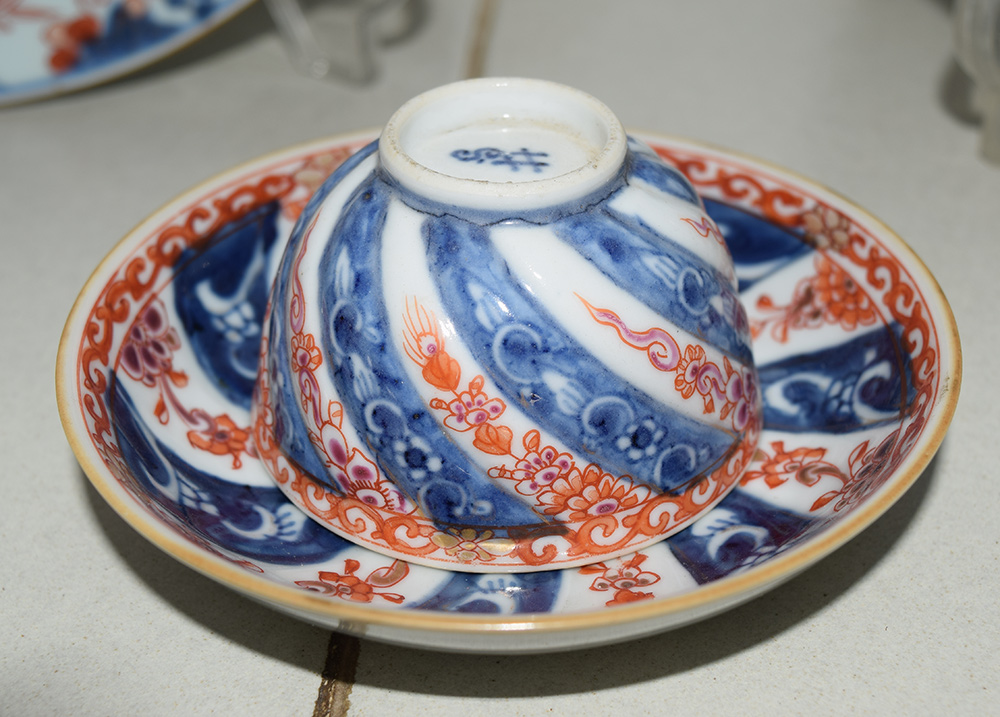
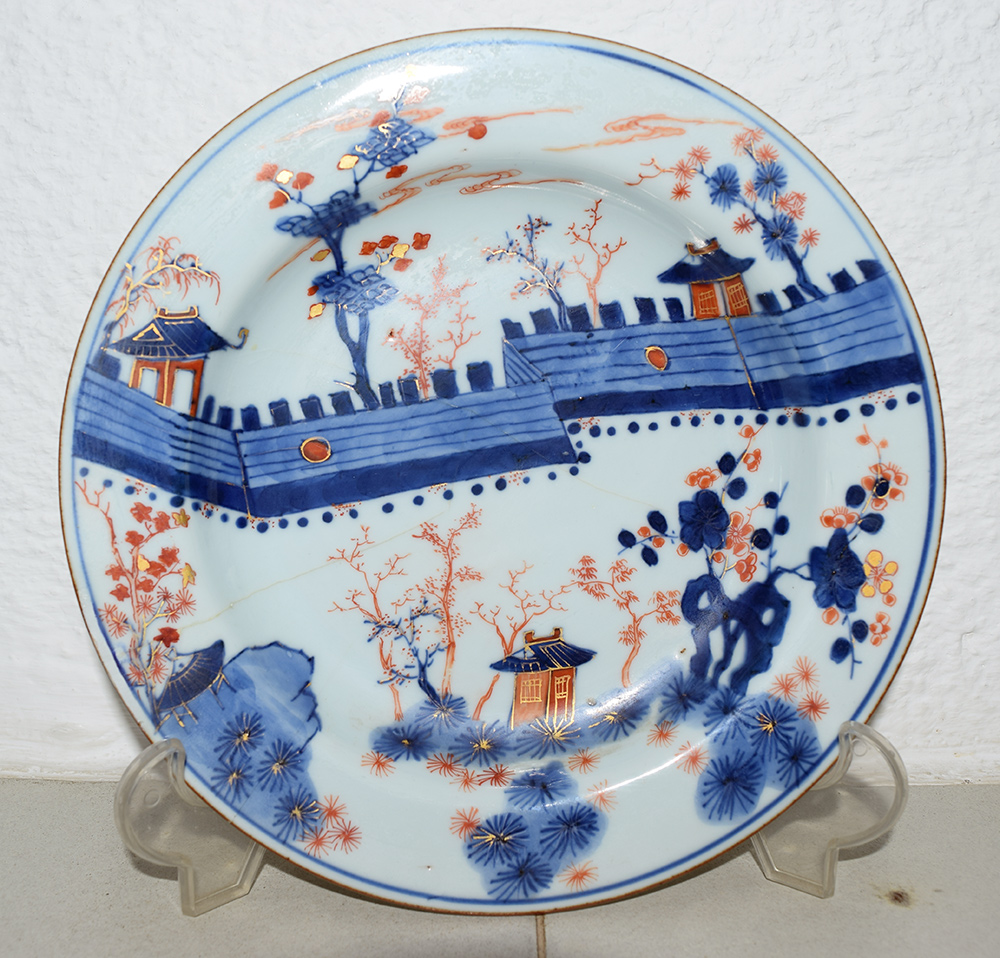
For comparison – below is a photo of the wall at Badaling, showing the key features on the plate.







